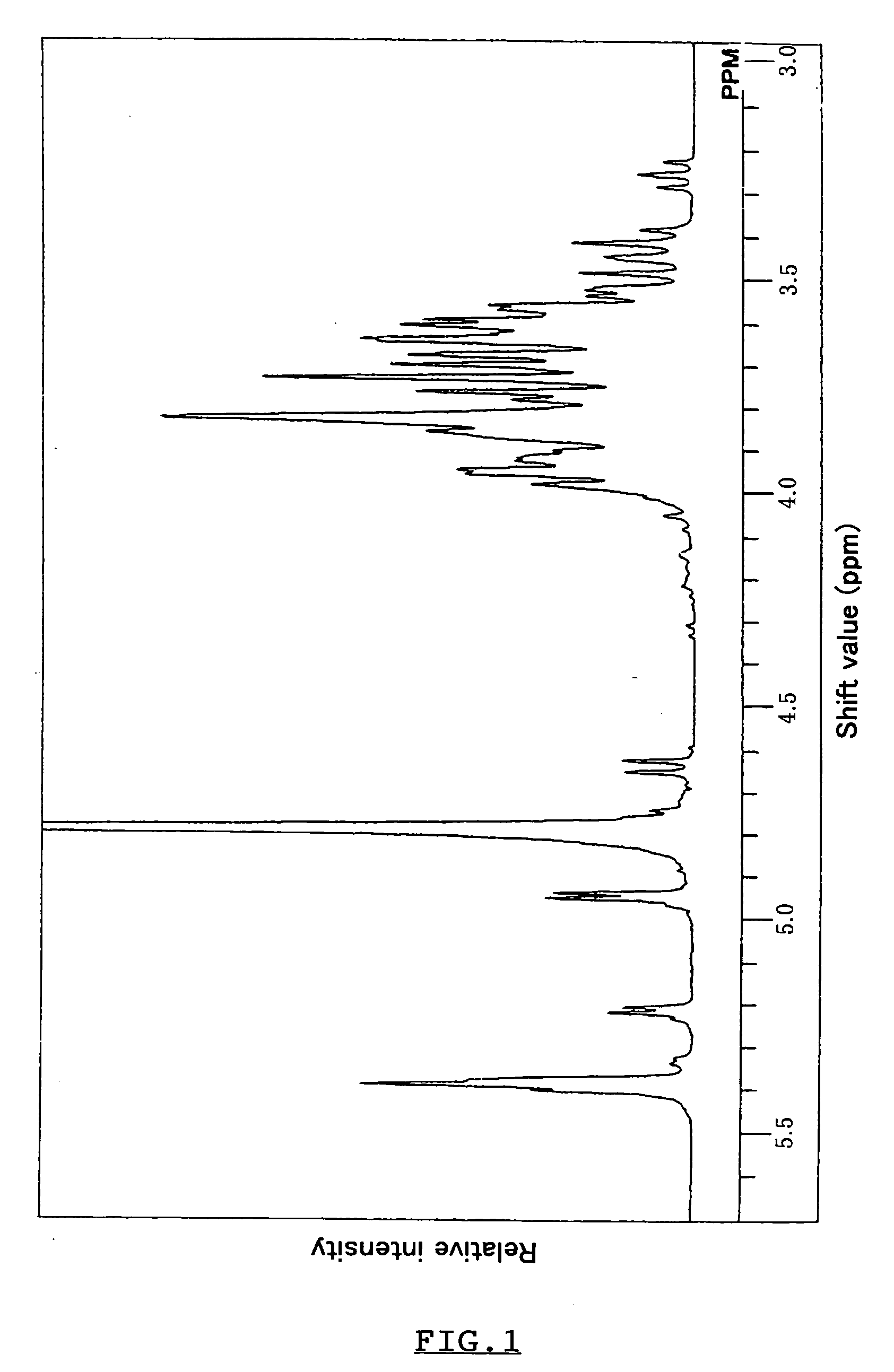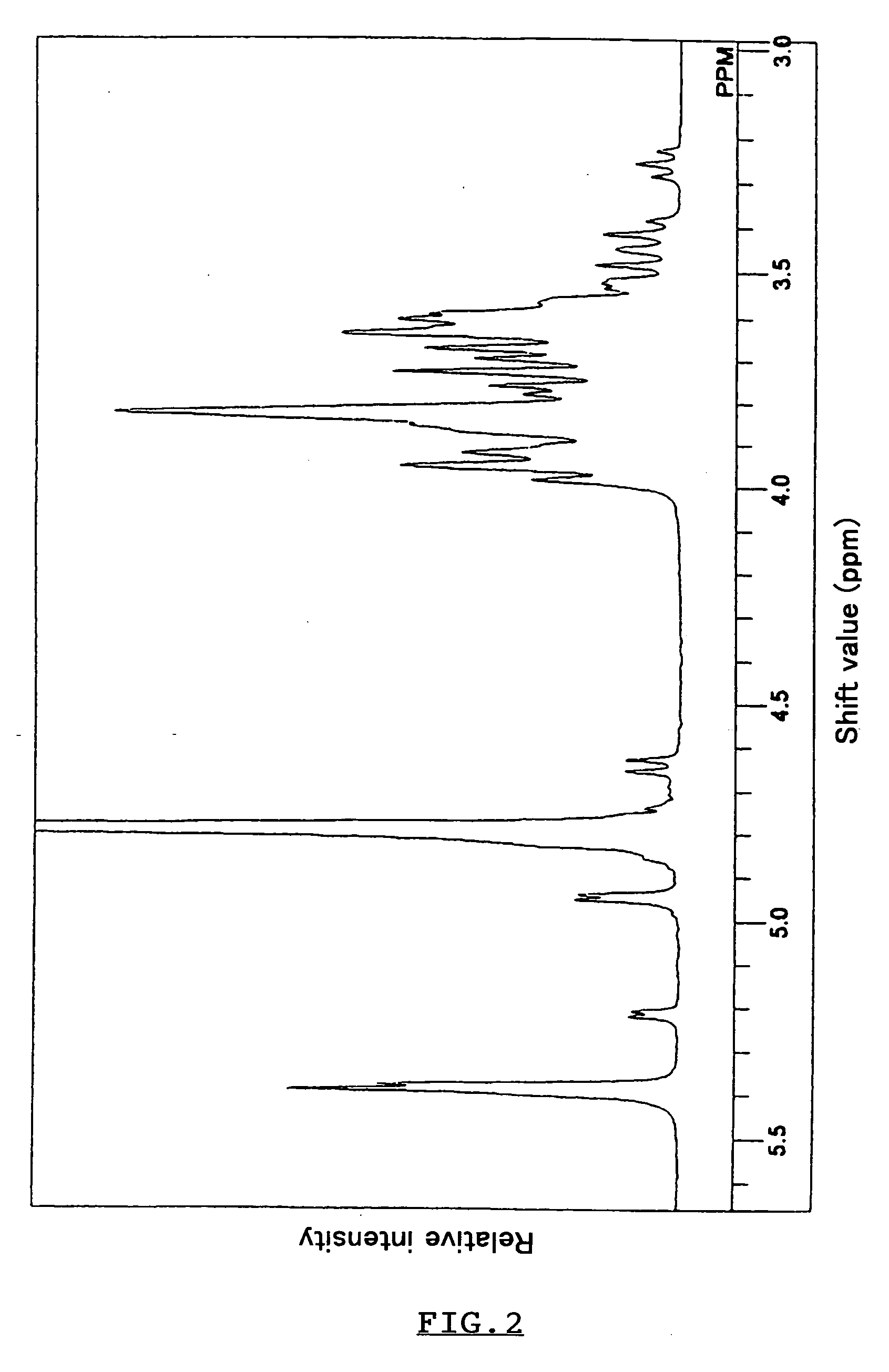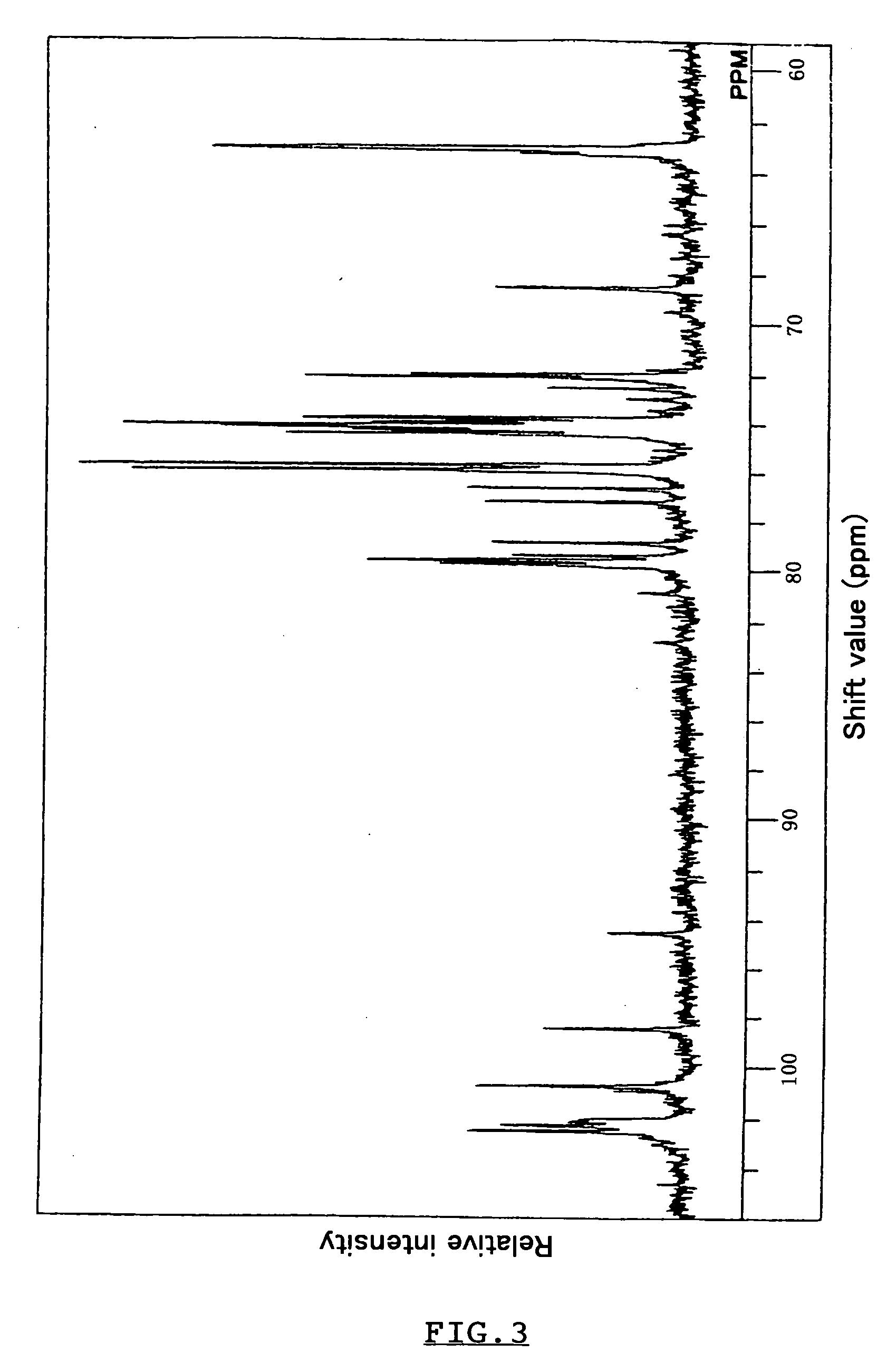Polypeptide having alpha-isomaltosylglucosaccharide synthase activity
a polypeptide and alpha-isomaltosylglucosaccharide technology, applied in the field of polypeptides having alpha-isomaltosylglucosaccharide synthase, can solve the problems of limited types of non- or low-reducing saccharides which are available in the art, and microorganisms as alternanase sources are not easily available, and achieve high acid- and heat tolerance, favorable use, and good s
- Summary
- Abstract
- Description
- Claims
- Application Information
AI Technical Summary
Benefits of technology
Problems solved by technology
Method used
Image
Examples
example 2
[0276] Production of the Polypeptide of the Present Invention
[0277] A liquid medium containing 5 g / L of "PINE-DEX #4", a partial starch hydrolyzate, 20 g / L of polypeptone, 20 g / L of yeast extract, 1 g / L of sodium phosphate, and water was placed in a 500-ml Erlenmeyer flask in an amount of 100 ml, sterilized at 121.degree. C. for 15 minutes, and cooled. Then, the liquid medium was sterilely set to pH 7.0, and admixed with ampicillin sodium salt to give a final concentration of 100 .mu.g / ml. A transformant, BGN2, obtained by the method in Experiment 6-2, was inoculated into the above liquid medium, and cultured at 27.degree. C. and at 230 rpm for 24 hours to obtain the seed culture. Subsequently, about 18 L of a fresh preparation of the same liquid culture medium as used above seed culture was placed in a 30-L ferment6r, sterilized with the same manner, cooled to 27.degree. C., and then admixed with ampicillin to give a concentration of 50 .mu.g / ml, and inoculated with 1%(v / v) of the ...
example 3
[0278] Production of a Syrupy Composition Containing Cyclotetrasaccharide
[0279] A tapioca starch was prepared into an about 25% starch suspension, admixed with 0.2% / g-starch, d.s.b., of "NEOSPITASE", an .alpha.-amylase commercialized by Nagase Biochemicals, Ltd., Kyoto, Japan, and then heated at 85-90.degree. C. for about 25 minutes. After autoclaving at 120.degree. C. for 20 minutes, the reaction mixture was cooled to about 35.degree. C. to obtain a liquefied-solution with a DE about four. The liquefied solution was admixed with2.2 units / g-starch,d.s.b., of the polypeptide of the present invention, obtained in Example 1, 6.6 units / g-starch, d.s.b., of .alpha.-isomaltosyl-transferring enzyme obtained by the method in Experiment 1-4, and 10 units / g-starch, d.s.b., of cyclomaltodextrin glucanotransferase commercialized by Hayashibara Biochemical Laboratories Inc., followed by the enzymatic reaction at pH 6.0 and at 35.degree. C. for 48 hours. After heating to 95.degree. C. for 30 minu...
example 4
[0281] Production of a Crystalline Powder of Cyclotetrasaccharide
[0282] A corn starch was prepared into a 25% starch suspension, admixed with calcium carbonate to give a final concentration of 0.1%, adjusted to pH 6.5, and admixed with 0.3% / g-starch of "THERMAMYL 60 L", an .alpha.-amylase commercialized by Novo Industries A / S, Copenhagen, Denmark, and then heated at 95.degree. C. for 15 minutes. After autoclaving at 120.degree. C. for 20 minutes, the reaction mixture was cooled to 35.degree. C. to obtain a liquefied solution with a DE of about four. To the liquefied solution was added 2.5 units / g-starch, d.s.b., of the polypeptide of the present invention, obtained in Example 1, 7.0 units / g-starch, d.s.b., of .alpha.-isomaltosyl-transferring enzyme obtained by the method in Experiment 1-4, and 10 units / g-starch, d.s.b., of cyclomaltodextrin glucanotransferase commercialized by Hayashibara Biochemical Laboratories Inc., followed by the enzymatic reaction at pH 6.0 and 35.degree. C. f...
PUM
| Property | Measurement | Unit |
|---|---|---|
| Molecular weight | aaaaa | aaaaa |
| pH | aaaaa | aaaaa |
| temperature | aaaaa | aaaaa |
Abstract
Description
Claims
Application Information
 Login to View More
Login to View More - R&D
- Intellectual Property
- Life Sciences
- Materials
- Tech Scout
- Unparalleled Data Quality
- Higher Quality Content
- 60% Fewer Hallucinations
Browse by: Latest US Patents, China's latest patents, Technical Efficacy Thesaurus, Application Domain, Technology Topic, Popular Technical Reports.
© 2025 PatSnap. All rights reserved.Legal|Privacy policy|Modern Slavery Act Transparency Statement|Sitemap|About US| Contact US: help@patsnap.com



